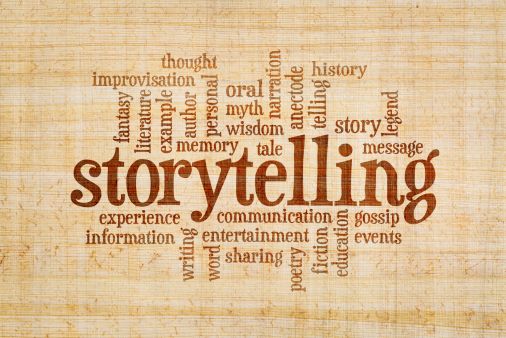In today’s competitive market, successful brands sell not just products or services; they sell stories. These stories create impressions, entice customers’ perceptions, and drive a new generation of business people. Many of these vivid tales, however, remain untold. We will take a deeper dive into these motivational brand stories today, and see what the stories can tell us, not only as future entrepreneurs but as successful entrepreneurs.
The Power of Brand Storytelling

Brand storytelling, after all, aims to make you an emotional connect with your customers. But not what you provide; that is why you are there. By sharing authentic and relatable stories, brands can engage consumers on a deeper level. This emotional engagement is the key to brand recall and differentiates a brand in an overpopulated marketplace.
Successful brands tend to rely on their story to share their journey, process, pains, and achievements so consumers can get a human perspective of the business. Whether you are a family business or a tech startup, these stories make connections with customers and create a community.
Also Read: The Startup Story of Capchase: Revolutionizing SaaS Financing
Untold Stories of Successful Brands
1. Nike: From Struggle to Iconic Status
Nike has the most famous success story. Established in 1964 as Blue Ribbon Sports, initially struggled to gain traction but the business never really took off. The co-founders, Phil Knight, and Bill Bowerman, had their hands full, from financial problems to intense competition. But their enthusiasm for sport and creativity resulted in the Nike brand of today.
Nike’s iconic “Just Do It” campaign is a classic case study in branding storytelling. It does not just encourage sport but motivates people to reach their full potential. In the campaign, they say success means not only victoriously but also perseverance, toughness, and defeat. Such sentimental resonance has propelled Nike to the forefront of global dominance demonstrating the value of patience and authenticity within the brand narrative.
The story of the brand’s social engagement has also been narrative. Nike has leveraged its reach to campaign for equality and empowerment, most prominently in the form of Nike players such as Colin Kaepernick. This radical stance was popular among consumers and helped establish Nike as a brand willing to venture out. Using these narratives, Nike not only connects with its audiences but also refocuses its brand’s core values on those of its consumers.
2. Airbnb: Turning Adversity into Opportunity
Airbnb’s journey began in 2008, when the co-founder’s Brian Chesky and Joe Gebbia were in debt. They decided to lease their apartment’s air mattresses out to visitors to a design conference. This idea sparked the creation of Airbnb, which now has millions of visitors matched with hosts around the world.
Airbnb’s e-commerce brand narrative is one of strength and invention. The brand’s ethos of offering an immersive travel experience has caught on with consumers who are looking for more than just a hotel room. Through host and guest stories, Airbnb can demonstrate the human bonds formed in the platform by helping to reinforce brand values.
Airbnb also uses storytelling to solve problems and controversy. For example, after being investigated for its role in local housing markets, the company started initiatives around responsible hosting and community engagement. By being open about these experiences and proactively listening to complaints, Airbnb has built trust with its users and demonstrated its commitment to creating positive social impact.
Moreover, Airbnb’s advertising tends to show how unique it is for travelers to experience the local, homestead experience instead of a hotel. Airbnb makes people feel included and valued by sharing the actual experiences of guests and hosts which is an essential factor in brand adherence. It is a technique that not only makes guests feel connected to the places but allows hosts to contribute to the brand story.
3. Patagonia: A Commitment to Sustainability
Patagonia is a company known not only for its quality of outdoor apparel but also for its uncompromising dedication to the environment. It established by Yvon Chouinard in 1973, is about more than making a profit: they are about saving the world. The brand has pioneered sustainable practices and inspired other brands to follow.
Patagonia’s brand narrative revolves around its ecological projects and its beneficiaries. Their “Don’t Buy This Jacket” campaigns encourage people to think differently about consumption and its impact on the environment. This design speaks to sustainability-minded customers and underscores Patagonia’s sustainability work.
By incorporating stories from communities of people and environmentalists, Patagonia shifts its brand from selling products to being social. The brand demonstrates that it supports projects such as reforestation, conservation, and climate activism and solicits customers to join these movements. Such a dedication to sustainability not only makes Patagonia a stronger brand identity but also builds a loyal community of consumers who share similar values.
Furthermore, Patagonia’s “Worn Wear” campaign allows customers to repair and recycle their equipment rather than re-purchasing new ones. Not only does it ensure sustainability, but also bolsters the brand story of responsible consumption. In highlighting customer stories about repairing and recycling their gear, Patagonia is underscoring the power of quality over quantity and strengthening its position as a leader in sustainable business practices.
4. Coca-Cola: Building a Global Community
Coca-Cola has been a consumer staple for more than 100 years but its origin story extends beyond just refreshing beverages. It was because the brand cultivated a global community through experience that it succeeded. Coca-Cola’s marketing strategies encourage connections, celebrating moments of joy and connection.
The “Share a Coke” campaign shows the storytelling skills of Coca-Cola. In engraving bottles with popular names, the company asked consumers to post reviews, so that consumers felt part of a community. The strategy not only increased sales but also strengthened and deepened emotional bonds with customers.
Coca-Cola’s holiday adverts – especially its popular Christmas ads featuring Santa Claus – have become cultural benchmarks. These narratives inspire memories and sentiments, which supports the brand’s positioning as a source of joy and intimacy. In constantly adapting its messages to the themes of shared happiness and connection, Coca-Cola has maintained its relevance across generations.
Coca-Cola also embraced social responsibility in storytelling. The brand has also launched diversity, inclusion, and sustainability projects to meet the current society’s needs. In adopting these elements in the brand story, Coca-Cola not only appeals to the customer but also establishes itself as a socially conscious brand.
5. Apple: Innovation at Its Core
Apple’s story is about ingenuity, inspiration, and the pursuit of perfection. Steve Jobs, Steve Wozniak, and Ronald Wayne co-founded it in 1976, though the company foundered for a lot of its beginnings, going close to bankruptcy. However their commitment to innovation made them innovators of such groundbreaking products like the iPod, iPhone, and iPad.
Apple’s brand message – be smart, think differently. The company has managed to establish itself as a technological and design innovation leader and one that will appeal to innovative consumers. Featuring the journeys of users who are changing their lives by using Apple products, Apple helps reinforce the brand’s purpose and vision.
This “Think Different” campaign is part of Apple’s storytelling strategy. With its induction of inventors and explorers such as Albert Einstein and Martin Luther King Jr, Apple turned itself into a brand for those who dared to push the envelope. This is a story that appeals to consumers who wish to be part of an organization of creators and innovators.
Moreover, Apple’s privacy and security efforts are now a central part of its narrative. Apple has found a place in the day and age where we are starting to worry about data privacy because it’s more of a user privacy thing. Apple has garnered users’ trust and loyalty by telling them stories of how it is dedicated to protecting customer data.
Also Read: Inspiring Story of Women Instructress in SWARNA BHARAT TRUST
Lessons from Successful Brands
- Authenticity Matters: Authenticity is crucial for building trust with consumers. Successful brands share their real stories, showcasing their challenges and triumphs. This transparency fosters a deeper connection with the audience.
- Emotional Engagement: Brands that can evoke emotions through their storytelling create lasting impressions. By tapping into the audience’s feelings, brands can build loyalty and inspire action.
- Align Values with Storytelling: Successful brands clearly communicate their values and align their narratives accordingly. This alignment reinforces brand identity and attracts consumers who share similar values.
- Adaptability: The business landscape is constantly changing. Successful brands adapt their stories to resonate with evolving consumer needs and preferences. Staying relevant is key to maintaining a strong brand presence.
- Community Building: Engaging consumers in brand storytelling creates a sense of community. Brands that foster connections among their audience strengthen customer loyalty and encourage word-of-mouth marketing.
Conclusion
Finding the hidden narratives of successful brands helps us to see how stories have an impact on how people think and engage. Such stories are also a source of inspiration for wannabe business owners and lessons for mature enterprises. By playing with authenticity, emotional connection, and responsiveness, brands can tell compelling narratives that engage consumers and leave them with a lasting impression. When creating your brand story, just remember, that any story can move and touch someone, so tell it proudly.
By learning from these untold stories, potential entrepreneurs can be encouraged by successful brands to learn how to form connections with audiences. The lessons drawn from these narratives serve as a testament to the transformative power of storytelling in the world of business.



